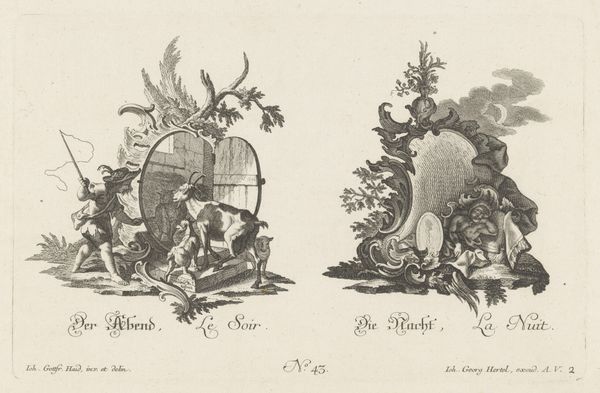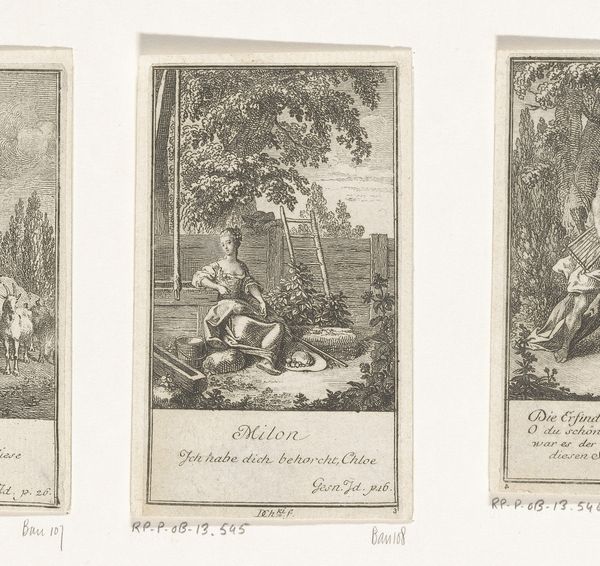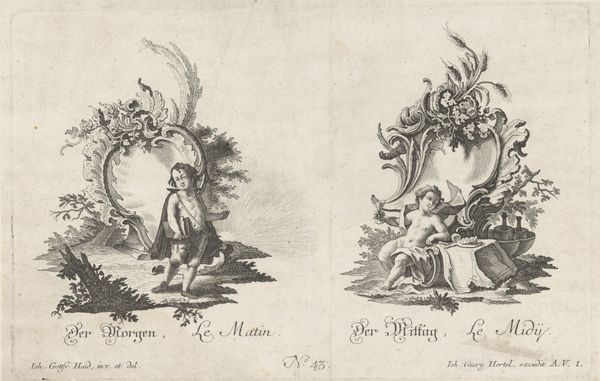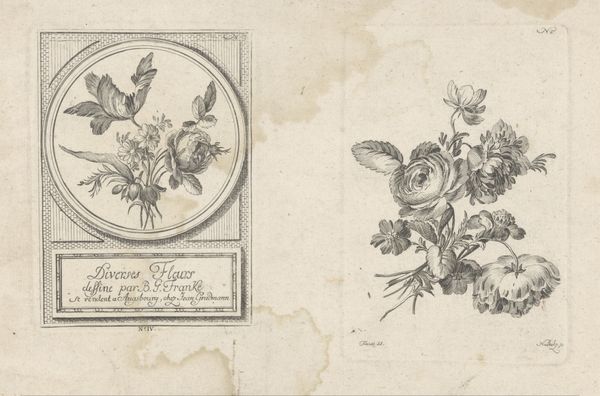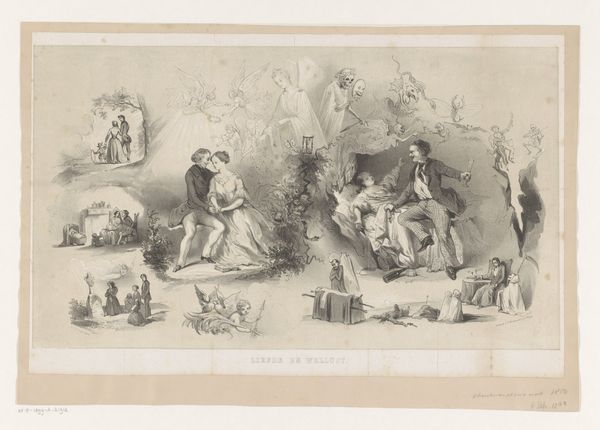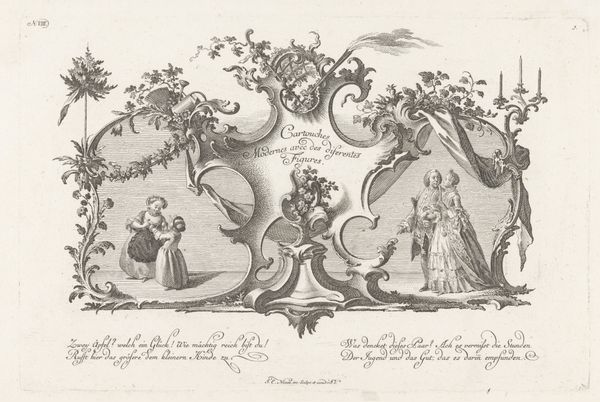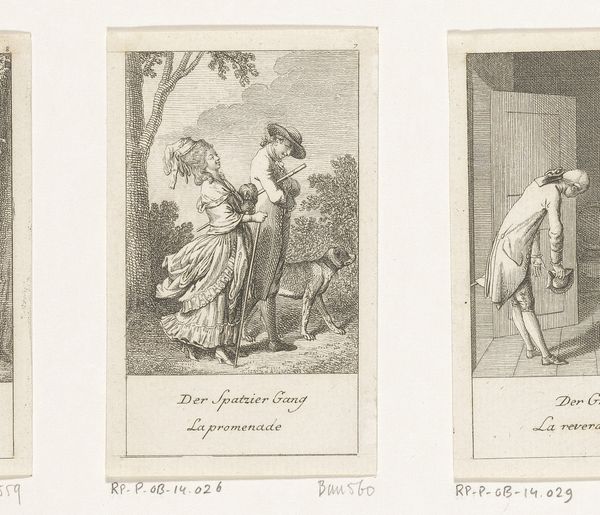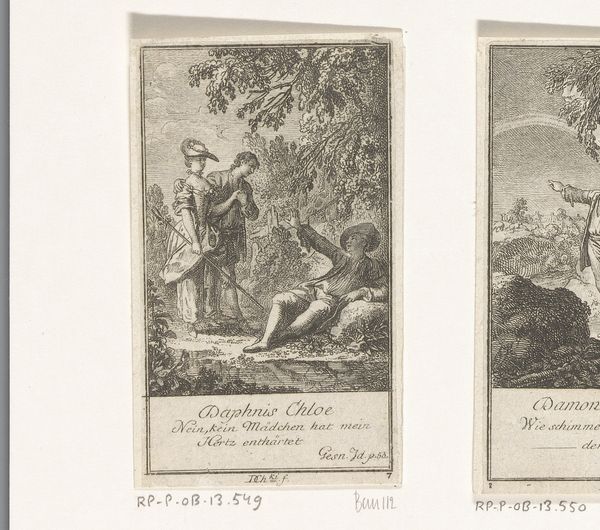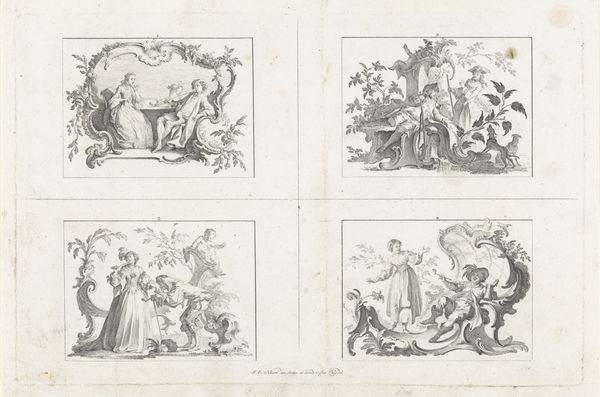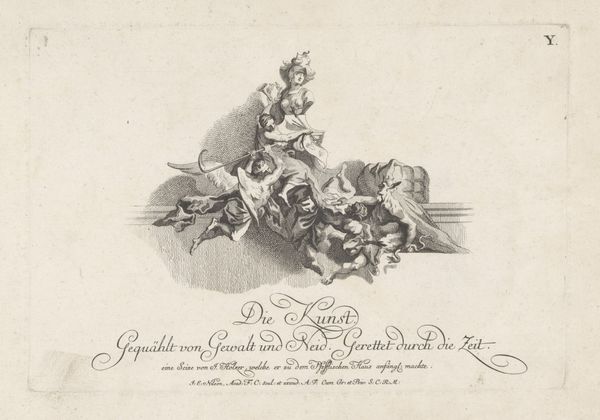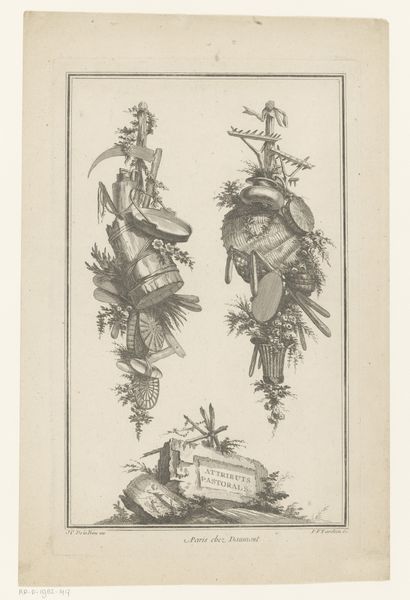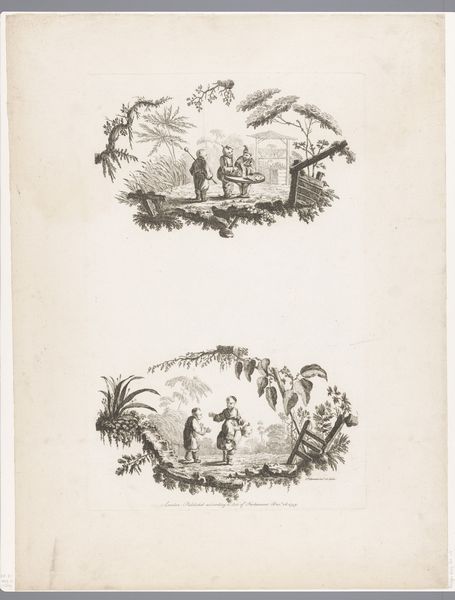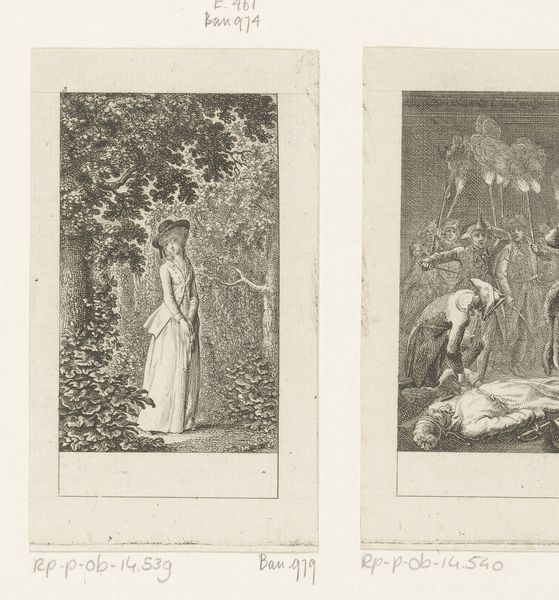
print, etching, engraving
#
allegory
#
baroque
# print
#
etching
#
landscape
#
engraving
Dimensions: height 185 mm, width 294 mm
Copyright: Rijks Museum: Open Domain
Curator: Welcome. Before us is an interesting piece titled "Silenus en Flora." This engraving and etching, made sometime between 1731 and 1775, is currently held in the Rijksmuseum collection. It’s an allegorical depiction set within a detailed landscape. Editor: My first impression is one of contrasts. The monochrome gives it an antiquated feel, almost like looking at a faded memory, but there’s a certain playful lightness conveyed through the figures and flourishing details that prevents it from feeling melancholic. Curator: It's fascinating to consider the choices in representation, specifically, how this artwork interacts with notions of the idealized past and nature through classical figures and pastoral settings. These are typical themes that often appeared in art during the baroque period, often employed to convey messages of power and culture. Editor: Precisely, and I think it's crucial we contextualize those visual decisions. Flora is not simply nature; she is controlled, idealized nature. Likewise, placing Silenus, associated with drunkenness and revelry, next to her creates a dialogue. What does that proximity suggest about how these contrasting principles reflect contemporary power structures? It calls for reflection on societal control and order. Curator: This work and others like it served specific societal functions. Prints such as this were frequently circulated amongst the bourgeois and aristocratic class of the 18th Century in the same way photographs circulate now. They are indicators of aesthetic taste. Also, let’s look closely at the detailed execution; notice the remarkable precision. Editor: The skill is undeniable, yes, and that precision, that technical expertise is exactly the thing that is both so alluring and so… concerning. Whose values are being amplified by its widespread circulation? It makes me question how the piece actively constructs or perpetuates systems of privilege. Curator: I agree that your reading highlights a deeper conversation, particularly given our contemporary lens and theoretical framework. Thanks to its complex and contested history, the role of this baroque print can still stimulate very important contemporary conversations. Editor: Indeed, it compels us to investigate these seemingly delicate images with thoughtful critique, acknowledging not just artistic expertise but social impact.
Comments
No comments
Be the first to comment and join the conversation on the ultimate creative platform.
